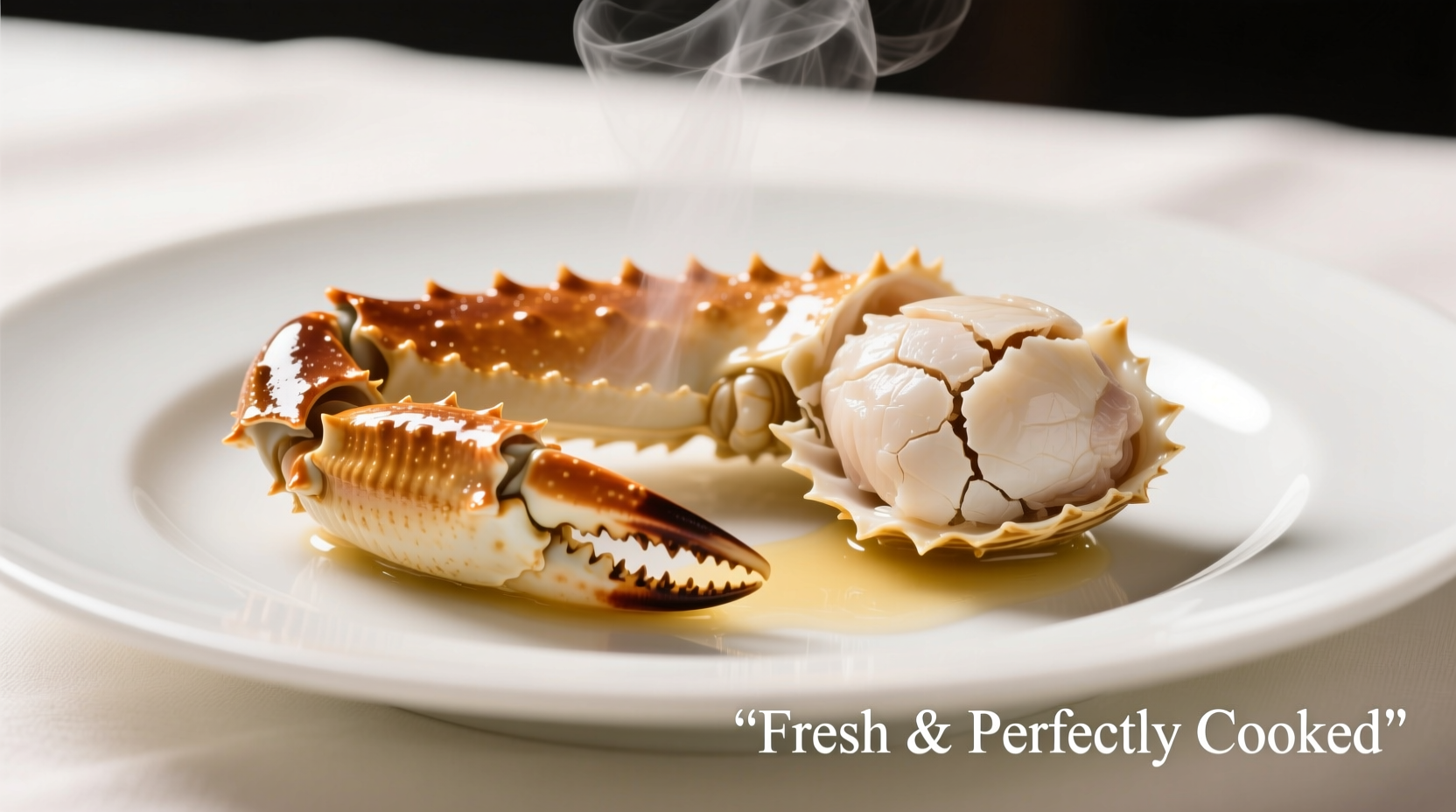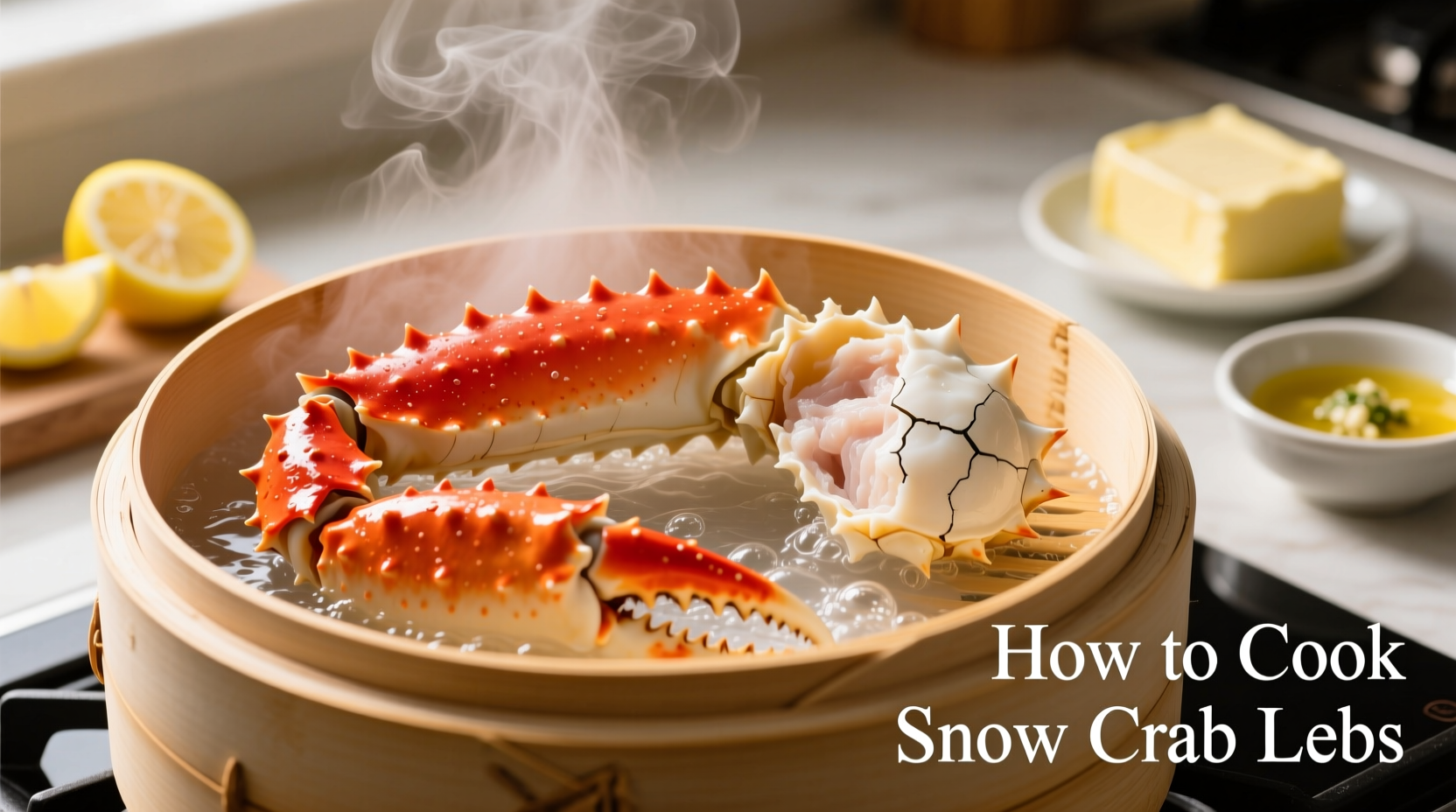Perfectly cooked snow crab legs deliver sweet, tender meat that melts in your mouth—but overcooking turns them rubbery and bland. This guide gives you three reliable methods (boiling, steaming, baking) with exact timing based on size, plus professional chef tips you won't find elsewhere. Whether you're cooking frozen or fresh crab, you'll learn how to achieve restaurant-quality results at home in under 20 minutes.
Why Cooking Method Matters for Snow Crab Legs
Snow crab legs (Chionoecetes opilio) have delicate, sweet meat that requires precise cooking. Unlike king crab, snow crab shells are thinner and more fragile, making them prone to overcooking. The National Oceanic and Atmospheric Administration (NOAA) confirms that snow crab accounts for over 60% of all crab consumed in the U.S., yet most home cooks struggle with timing.
Before You Start: Essential Prep Work
Proper preparation prevents common mistakes that ruin snow crab's texture:
Thawing Frozen Crab Legs Safely
Frozen crab legs must be thawed properly before cooking. The U.S. Food Safety and Inspection Service (FSIS) recommends:
- Refrigerator method: Place in colander over plate, refrigerate 8-12 hours
- Cold water method: Submerge sealed bag in cold water for 30-60 minutes (change water every 20 minutes)
- Never use hot water—it starts cooking the exterior while interior remains frozen
Tools You'll Need
- 16-quart stock pot (for boiling)
- Steamer basket that fits your pot
- Crab crackers or kitchen shears
- Small forks or picks for extracting meat
- Instant-read thermometer (optional but helpful)
Three Foolproof Cooking Methods Compared
Each method affects flavor and texture differently. This comparison helps you choose based on your equipment and preferences:
| Method | Cooking Time | Best For | Flavor Impact |
|---|---|---|---|
| Boiling | 4-6 minutes | Quick meals, large batches | Slightly diluted flavor (some seasoning leaches into water) |
| Steaming | 5-8 minutes | Preserving natural sweetness | Most authentic flavor (no water contact) |
| Baking | 15-20 minutes | Pre-seasoned crab, hands-off cooking | Enhanced seasoning penetration |
Step-by-Step: Boiling Snow Crab Legs
This fastest method works best for thawed crab:
- Fill large pot ⅔ full with water, add ¼ cup salt and optional aromatics (bay leaves, lemon slices)
- Bring to rolling boil (212°F/100°C)
- Gently add crab legs using tongs
- Cook 4 minutes for small legs (1-1.5" diameter), 6 minutes for large (2"+)
- Immediately transfer to ice bath for 2 minutes to stop cooking
Pro Tip: Add 1 tablespoon vinegar to water to help prevent shell discoloration, as recommended by the Alaska Department of Fish and Game.
Step-by-Step: Steaming Snow Crab Legs
Preferred by seafood chefs for preserving natural sweetness:
- Add 2 inches of water to pot with steamer basket
- Bring to vigorous boil
- Place crab legs in single layer in basket
- Cover tightly, steam 5 minutes for small legs, 8 minutes for large
- Check for opaque meat and bright red shells
Step-by-Step: Baking Snow Crab Legs
Ideal for pre-seasoned or frozen crab:
- Preheat oven to 350°F (175°C)
- Arrange crab on baking sheet, brush with melted butter
- Wrap tightly in foil
- Bake 15 minutes for thawed crab, 20 minutes for frozen
- Unwrap, broil 2 minutes for caramelized edges
Critical Timing Guidelines by Size
Overcooking is the #1 mistake home cooks make. The University of California Sea Grant program confirms that snow crab meat becomes tough after just 2 minutes past ideal doneness:
- Small legs (1-1.5" diameter): 4-5 minutes boiling, 5-6 minutes steaming
- Medium legs (1.5-2" diameter): 5-6 minutes boiling, 6-7 minutes steaming
- Large legs (2"+ diameter): 6-7 minutes boiling, 7-8 minutes steaming
Doneness indicators: Shells turn bright red, meat becomes opaque white, and internal temperature reaches 140°F (60°C).
Serving Like a Pro
Maximize your effort with these chef-recommended finishing touches:
- Brush with garlic butter immediately after cooking
- Serve with lemon wedges and fresh parsley
- Provide crab picks and small forks for easy extraction
- Pair with drawn butter or aioli dipping sauce
Troubleshooting Common Problems
Problem: Meat sticks to shell
Solution: You likely overcooked the crab. Next time reduce cooking time by 1 minute and use ice bath immediately.
Problem: Shell won't crack easily
Solution: Use kitchen shears to cut along underside first, then crack with crab crackers.
Problem: Bland flavor
Solution: Add aromatics to cooking water—try 2 lemon slices, 4 garlic cloves, and 1 bay leaf per gallon.
Storage and Leftovers
Properly stored cooked crab remains delicious for 2-3 days:
- Cool completely before refrigerating
- Store in airtight container with damp paper towel
- Reheat gently in steamer for 2-3 minutes (never microwave)
- Freeze uncooked legs for up to 6 months

Frequently Asked Questions
Can I cook snow crab legs from frozen without thawing?
Yes, but increase cooking time by 50% and expect slightly less even results. The FDA recommends thawing for food safety, but baking frozen crab at 350°F for 25 minutes works in a pinch.
Why is my snow crab meat stringy?
Stringy texture indicates overcooking. Snow crab cooks faster than king crab—reduce time by 2-3 minutes next time and use an ice bath immediately after cooking.
How do I know when snow crab is fully cooked?
Look for bright red shells and opaque white meat. Properly cooked snow crab should reach 140°F internally. The shell should separate easily from the meat when cracked.
What's the difference between snow crab and king crab cooking times?
Snow crab cooks faster (4-8 minutes) than king crab (6-10 minutes) due to thinner shells. Snow crab's delicate meat overcooks more easily—stick to the lower end of timing recommendations.











 浙公网安备
33010002000092号
浙公网安备
33010002000092号 浙B2-20120091-4
浙B2-20120091-4